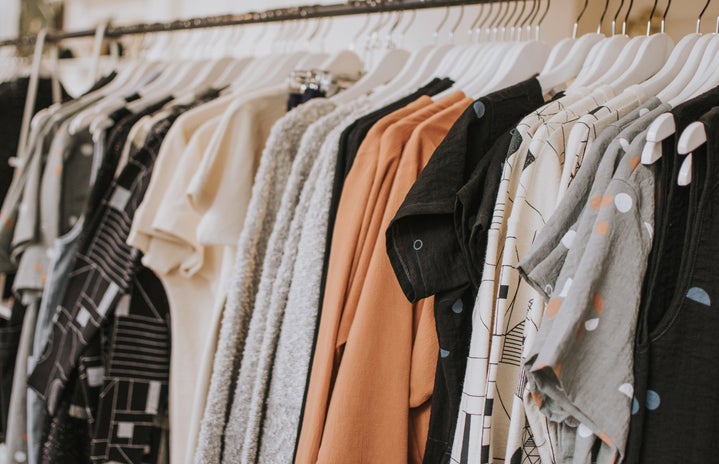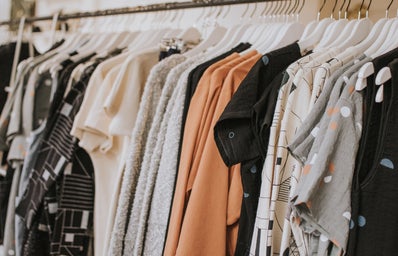Fast fashion websites, like Shein, and stores, like Urban Outfitters, produce clothes and accessories quickly and cheaply and offer them to consumers at low prices. These companies perpetuate the idea that we constantly need to buy new clothing pieces in order to remain “on-trend.” Though it has become normal for those of us in the Western world to have round-the-clock access to new clothes that have been deemed “trendy,” there are huge environmental and ethical costs associated with the fast fashion industry.
The environment is particularly affected by the fast fashion industry – according to Business Insider, it is responsible for 10% of humanity’s total carbon emissions and is the second-largest consumer of the world’s water supply. As our global carbon emissions rise, the threat of climate change and global warming becomes more imminent. Many fast fashion companies operate massive factories that contribute to air and water pollution during the process of production. According to Sustain Your Style, many of these factories dump untreated toxic wastewater directly into local bodies of water, leading to the contamination that can spread hundreds of miles from the original source. Such factories also generate immense amounts of greenhouse gas emissions due to their creation of synthetic fabrics out of fossil fuels.
After fast fashion companies produce and sell a piece of clothing that is “on-trend” for a short period of time, they quickly diffuse the idea that it is no longer stylish by offering new, different pieces for consumers to buy. These old, cheap and often poorly-made clothing pieces that were just bought often end up in landfills or are incinerated. As the fast fashion industry has grown during the 21st century, so has textile waste – an average family in the Western world throws away about 66 lbs of clothing per year. Synthetic fabrics such as polyester that end up in our landfills can take up to 200 years to naturally decompose. The pollution produced by fast fashion also extends to the ocean: the washing of synthetic garments can release up to 1900 individual microplastics into the water supply, which eventually ends up in the ocean. Fish and other organisms ingest these plastics, resulting in plastic being introduced into the food chain and potentially affecting human consumers of marine life.
In addition to the environmental impact that the fast fashion industry has on our planet, fast fashion companies frequently exploit factory workers in developing nations. The reason that these companies can produce clothes so quickly and sell them so cheaply is because they do not pay their workers, who are mostly women in countries like Bangladesh, Sri Lanka and Indonesia, a fair, living wage. These women are forced to work long hours with few breaks, and, according to Green America, can be subjected to gender-based violence from male management. In May 2018, Global Labor Justice uncovered frequent abuse of Asian female workers in factories that supply the fast fashion companies H&M and Gap. Such treatment of female workers contributes to the widespread disempowerment of women in the workplace in the developing world.

So, what can you do to avoid the fast fashion industry? Even if you can’t afford to make every piece in your wardrobe sustainable all at once, it’s important to actively take steps toward consuming less fast fashion. Be mindful of how your clothes are made and by whom. Are these people being paid a fair, livable wage? When looking for new clothes on fast fashion websites, stop and consider whether or not you have the time to search for similar items on a reselling app, at a local thrift store or from a sustainable fashion brand. Before you even go shopping for new clothes, look in your closet. Do you really need something new (the most sustainable form of consumption is not consuming at all!)? Can you repair or upcycle an old piece instead of buying a new one? If not, is there something that you no longer wear often that you can donate before buying something new? Try asking yourself these questions in order to monitor the reasons for your consumption.

Here are some of the best online brands to buy sustainable clothing:
-
Pact: offers organic, fair trade basics
-
Rent the Runway: allows you to rent and return high-fashion pieces for special events
-
Girlfriend Collective: provides size-inclusive and inexpensive activewear made from recycled material
Here are some of the best places to find second-hand clothing and accessories:
-
Thrift stores (Goodwill, Savers, etc.)
-
Swap clothing with your friends and family
Ultimately, it is more important now than ever to be fully conscious of your fashion choices and how they affect the environment and people close to and far from you.



